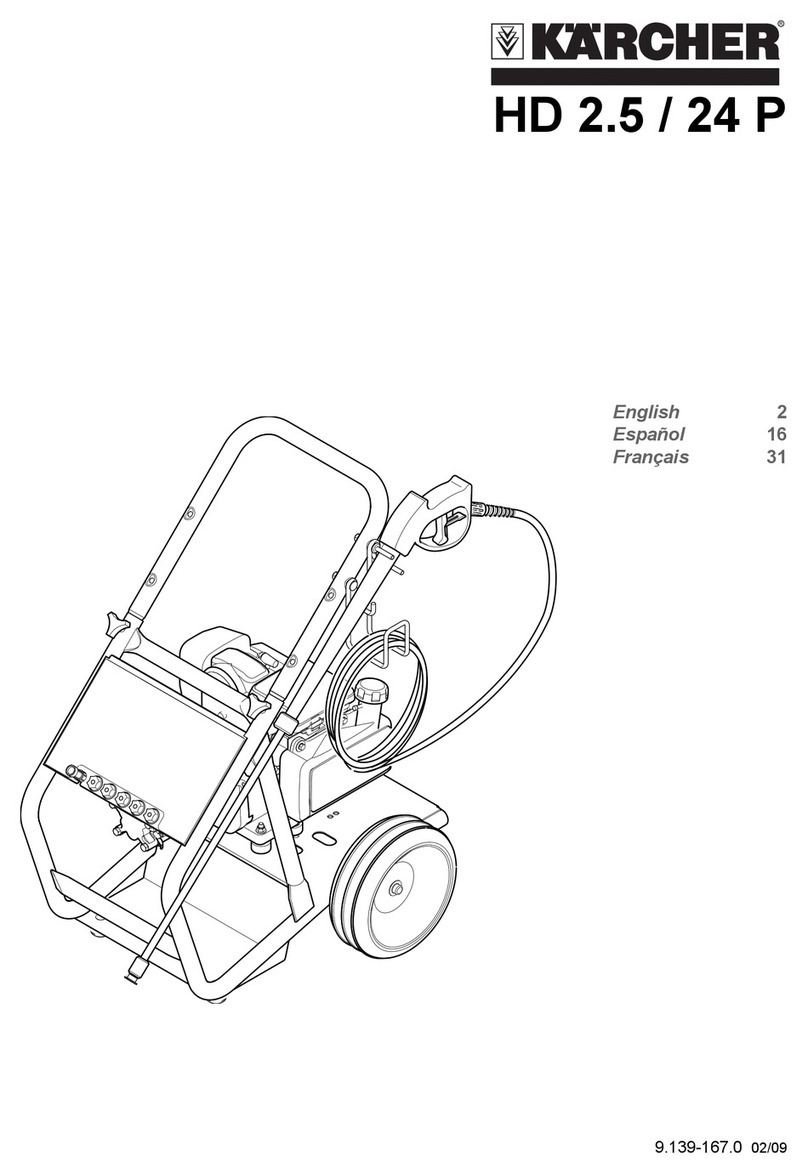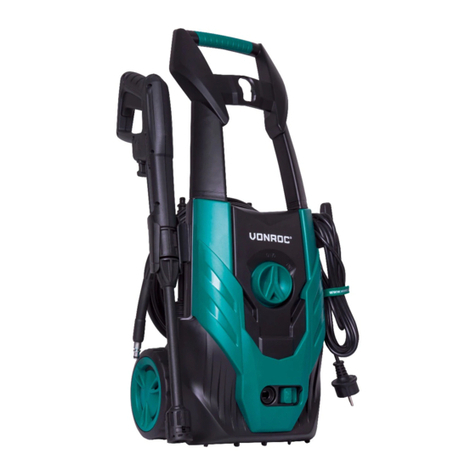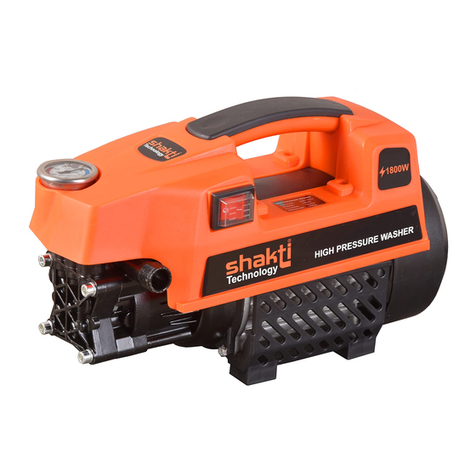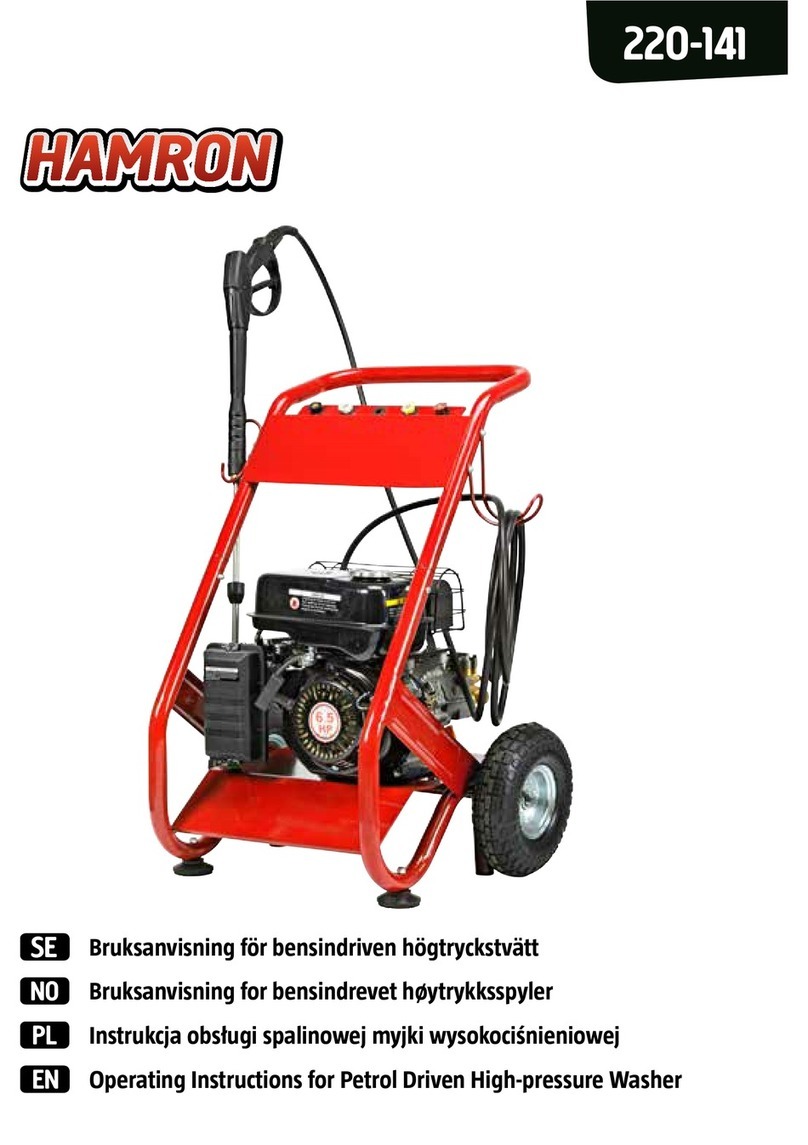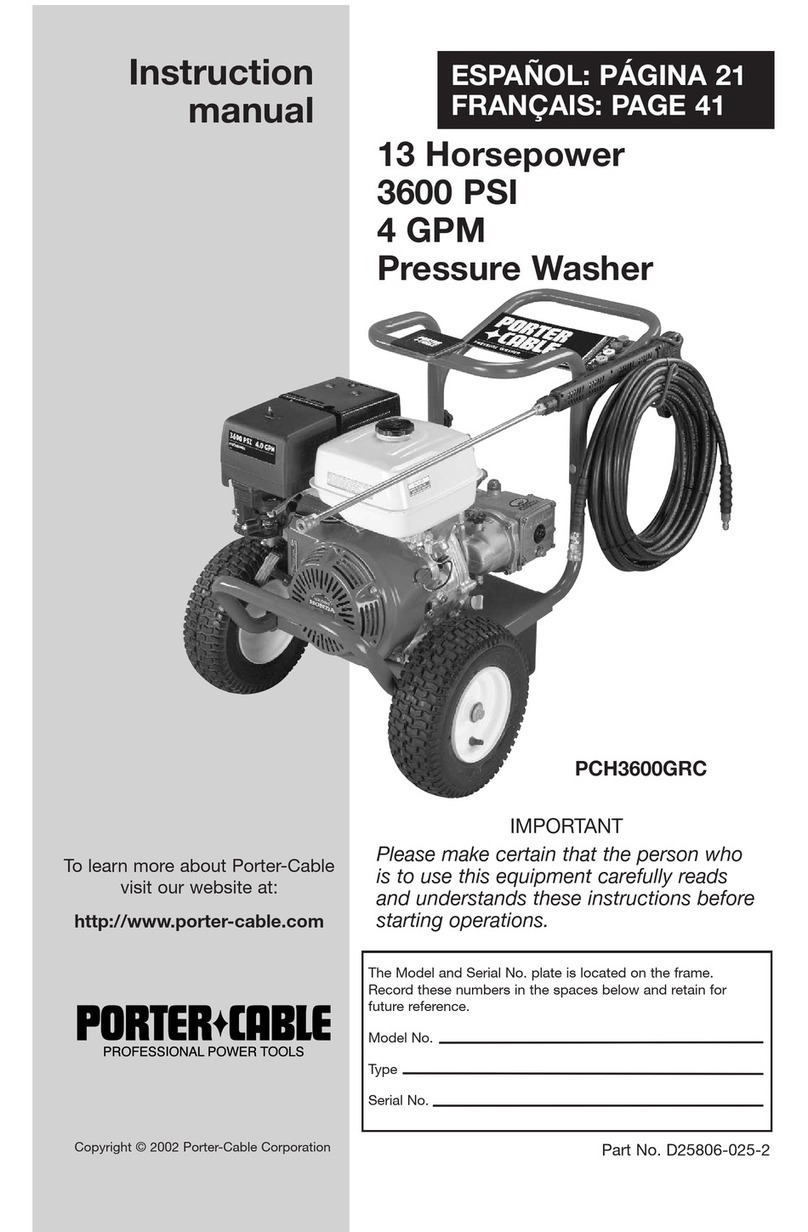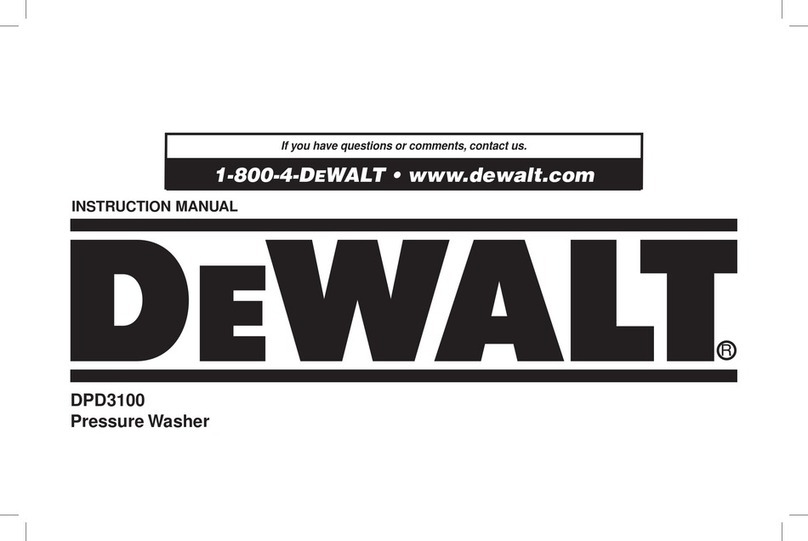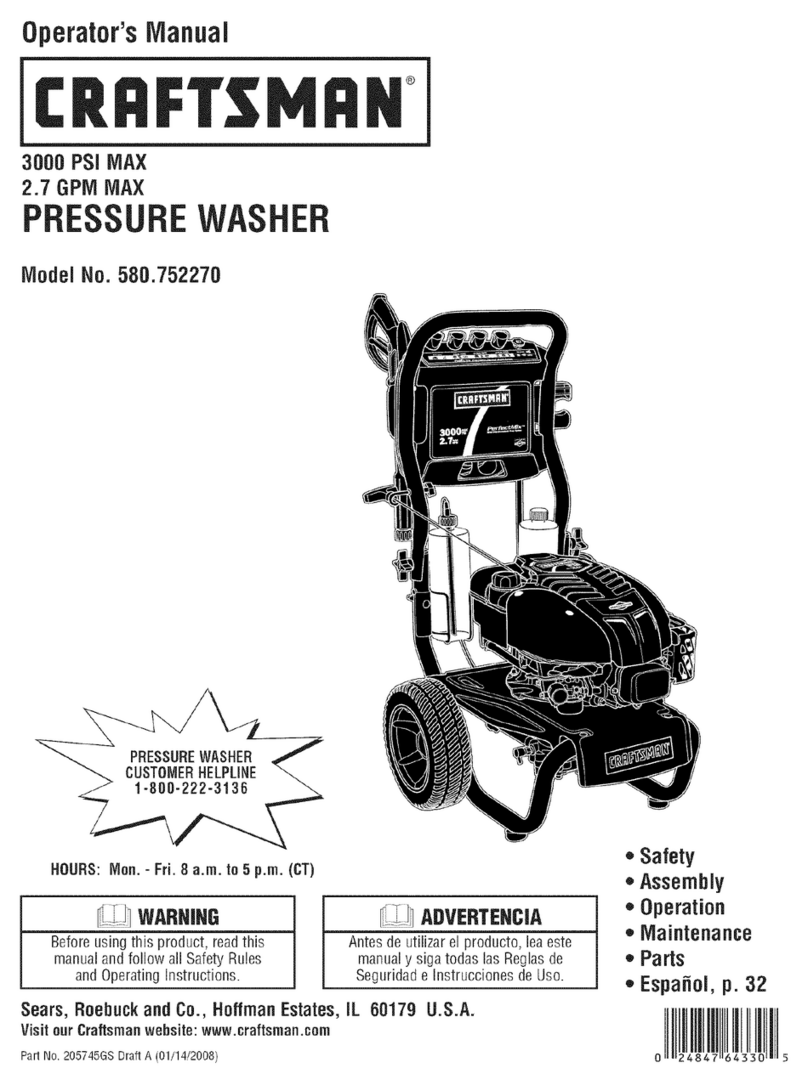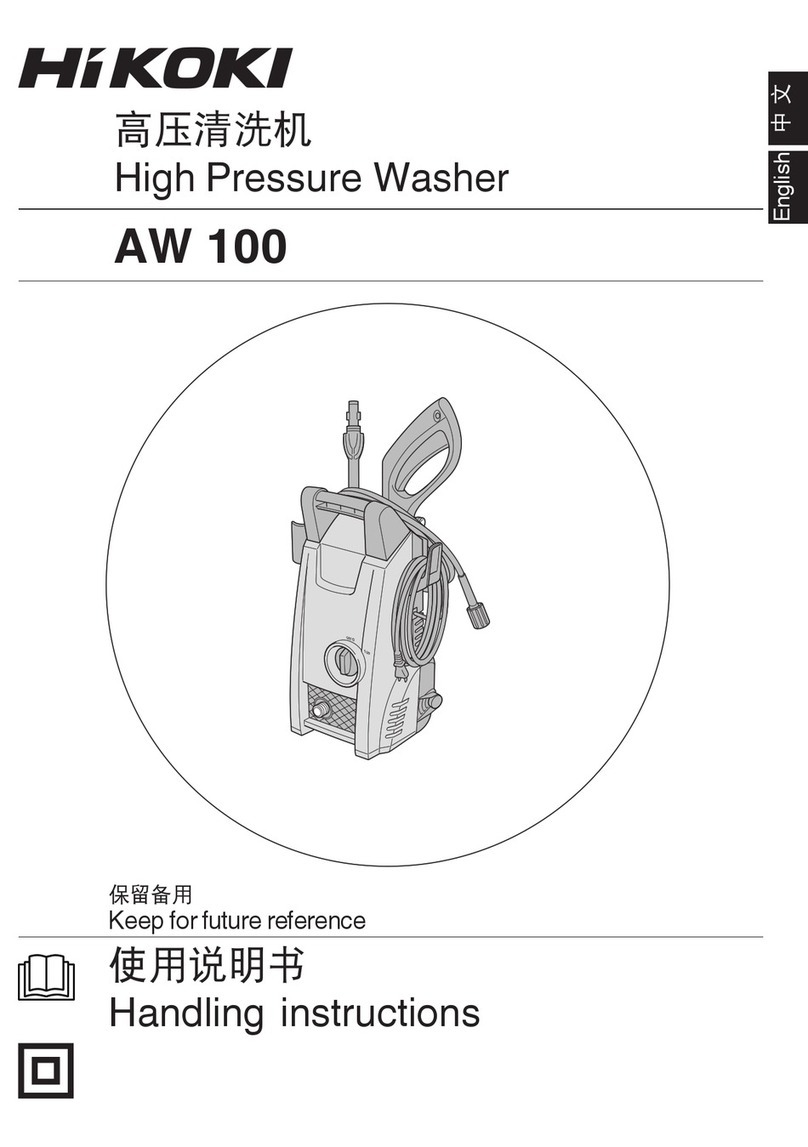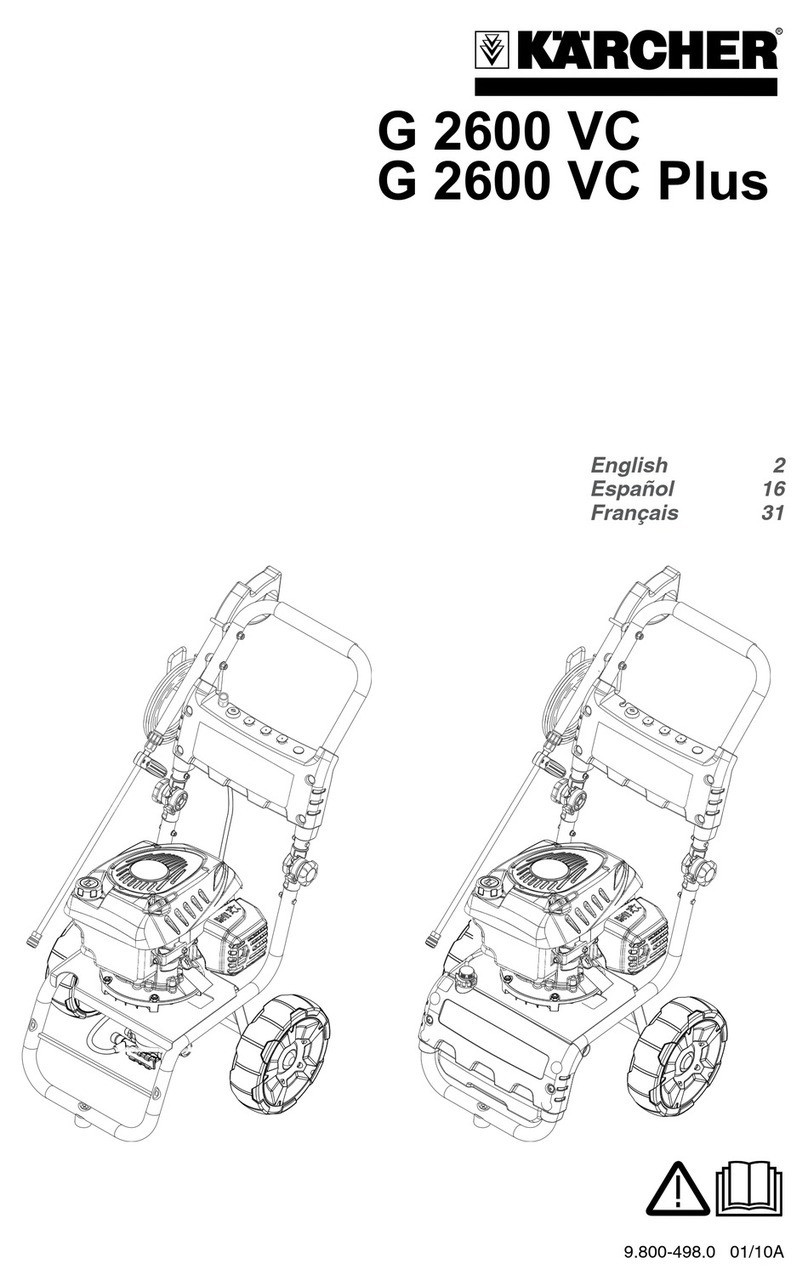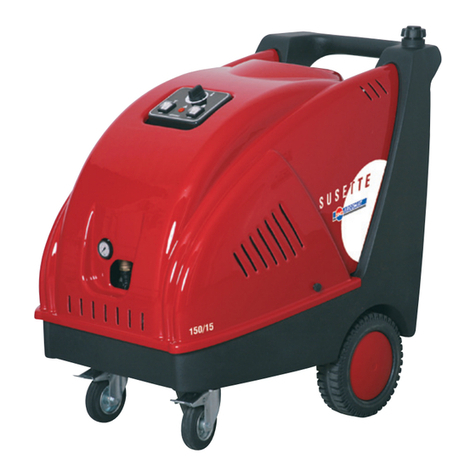Silverline Silver Storm 102580 User manual

S
I
L
V
E
R
L
I
N
E
R
A
N
G
E
102580
www.silverlinetools.com
105bar Max
Pressure Washer 1650W
Pressure Washer 1650W
Nettoyeur haute pression 1650 W
1650-W-Hochdruckreiniger
Hidrolimpiadora 1650 W
Idropulitrice 1650 W
Hogedrukreiniger, 1650 W
102580_Z1MANPRO1.indd 3 23/05/2014 14:57

2
45
1 2
6
Pressure Washer 1650W
7 8 9 10
11
13
16 15 14
18
19
17
12
102580_Z1MANPRO1.indd 2 23/05/2014 14:58

4
GB
Carefully read and understand this manual and any label attached to
the tool before use. Keep these instructions with the product for future
reference. Ensure all persons who use this product are fully acquainted
with this manual.
Even when used as prescribed it is not possible to eliminate all residual risk
factors. Use with caution. If you are at all unsure of the correct and safe
manner in which to use this tool, do not attempt to use it.
General Power Tool Safety Warnings
WARNING Read all safety warnings and all instructions. Failure to
follow the warnings and instructions may result in electric shock, fire and/
or serious injury.
Save all warnings and instructions for future reference.
The term "power tool" in the warnings refers to your mains-operated
(corded) power tool or battery-operated (cordless) power tool.
Work Area Safety
a) Keep work area clean and well lit. Cluttered or dark areas invite
accidents
b) Do not operate power tools in explosive atmospheres, such as
in the presence of flammable liquids, gases or dust. Power tools
create sparks which may ignite the dust or fumes
c) Keep children and bystanders away while operating a power tool.
Distractions can cause you to lose control
Specification
Voltage:...................................................230V~50Hz
Power: ....................................................1650W
Working Pressure (Bar):..........................70
Max Pressure (Bar): ................................105
Working flow rate: ..................................5.7L/min
Maximum flow rate:................................7.1L/min
High Pressure Hose Length:....................5m
Lance Nozzle Adjustment:.......................0-60°
Detergent Ratio:......................................5.4% (1/19th)
Approx.
Inlet Water temperature range: ...............5-50°C
Inlet Water Pressure:...............................0.1-4 Bar
(1.45-60psi/
0.01-0.4Mpa)
Protection class: .....................................
Ingress protection:..................................IPX5
Power cable Length:...............................5m
Weight: ...................................................5.5kg
Sound and vibration information:
According to Machinery Directive 2006/42/EC:
Sound pressure (LPA): ..............................80.7dB(A)
Sound power (LWA):..................................93.2dB(A)
Uncertainty K:.........................................2.6dB
Weighted vibration (ah):...........................< 2.5 m/s²
According to Outdoor Noise Directive 2000/14/EC:
Guaranteed sound power (LWA):...............96dB(A)
The sound intensity level for the operator may exceed 85dB(A) and
sound protection measures are necessary.
As part of our ongoing product development, specifications of
Silverline products may alter without notice.
Description of Symbols
The rating plate on your tool may show symbols. These represent important
information about the product or instructions on its use
Wear hearing protection
Wear eye protection
Wear breathing protection
Wear head protection
Wear hand protection
Read instruction manual
Double insulated for additional protection
Risk of electrocution
According to the applicable regulations, the appliance must
never be used on the drinking water supply without a system
separator
Conforms to relevant legislation and safety standards
Environmental Protection
Waste electrical products should not be disposed of with
household waste. Please recycle where facilities exist. Check
with your local authority or retailer for recycling advice
VVolts
~Alternating current
AAmpere
noNo load speed
Hz Hertz
W, kW Watt, kilowatt
/min or min-1 (revolutions or reciprocation) per minute
Original Instructions
102580_Z1MANPRO1.indd 4 23/05/2014 14:58

www.silverlinetools.com 5
Pressure Washer 1650W102580
Electrical Safety
a) Power tool plugs must match the outlet. Never modify the plug in
any way. Do not use any adapter plugs with earthed (grounded)
power tools. Unmodified plugs and matching outlets will reduce risk
of electric shock
b) Avoid body contact with earthed or grounded surfaces, such as
pipes, radiators, ranges and refrigerators. There is an increased
risk of electric shock if your body is earthed or grounded
c) Do not expose power tools to rain or wet conditions. Water
entering a power tool will increase the risk of electric shock
d) Do not abuse the cord. Never use the cord for carrying, pulling or
unplugging the power tool. Keep cord away from heat, oil, sharp
edges or moving parts. Damaged or entangled cords increase the
risk of electric shock
e) When operating a power tool outdoors, use an extension cord
suitable for outdoor use. Use of a cord suitable for outdoor use
reduces the risk of electric shock
f) If operating a power tool in a damp location is unavoidable, use
a residual current device (RCD) protected supply. Use of an RCD
reduces the risk of electric shock
NOTE: The term “residual current device (RCD)” may be replaced by
the term “ground fault circuit interrupter (GFCI)” or “earth leakage
circuit breaker (ELCB)”.
Personal Safety
a) Stay alert, watch what you are doing and use common sense
when operating a power tool. Do not use a power tool while you
are tired or under the influence of drugs, alcohol or medication.
A moment of inattention while operating power tools may result in
serious personal injury
b) Use personal protective equipment. Always wear eye protection.
Protective equipment such as dust mask, non-skid safety shoes, hard
hat, or hearing protection used for appropriate conditions will reduce
personal injuries
c) Prevent unintentional starting. Ensure the switch is in the
off-position before connecting to power source and/or battery
pack, picking up or carrying the tool. Carrying power tools with your
finger on the switch or energising power tools that have the switch on
invites accidents
d) Remove any adjusting key or wrench before turning the power
tool on. A wrench or a key left attached to a rotating part of the power
tool may result in personal injury
e) Do not overreach. Keep proper footing and balance at all times.
This enables better control of the power tool in unexpected situations
f) Dress properly. Do not wear loose clothing or jewellery. Keep your
hair, clothing and gloves away from moving parts. Loose clothes,
jewellery or long hair can be caught in moving parts
g) If devices are provided for the connection of dust extraction
and collection facilities, ensure these are connected and properly
used. Use of dust collection can reduce dust-related hazards
Power Tool Use & Care
a) Do not force the power tool. Use the correct power tool for your
application. The correct power tool will do the job better and safer at
the rate for which it was designed
b) Do not use the power tool if the switch does not turn it on and off.
Any power tool that cannot be controlled with the switch is dangerous
and must be repaired
c) Disconnect the plug from the power source and/or the battery
pack from the power tool before making any adjustments,
changing accessories, or storing power tools. Such preventive
safety measures reduce the risk of starting the power tool accidentally
d) Store idle power tools out of the reach of children and do
not allow persons unfamiliar with the power tool or these
instructions to operate the power tool. Power tools are dangerous
in the hands of untrained users
e) Maintain power tools. Check for misalignment or binding of
moving parts, breakage of parts and any other condition that may
affect the power tool’s operation. If damaged, have the power
tool repaired before use. Many accidents are caused by poorly
maintained power tools
f) Keep cutting tools sharp and clean. Properly maintained cutting
tools with sharp cutting edges are less likely to bind and are easier
to control
g) Use the power tool, accessories and tool bits etc. in accordance
with these instructions, taking into account the working
conditions and the work to be performed. Use of the power tool for
operations different from those intended could result in a hazardous
situation
Service
a) Have your power tool serviced by a qualified repair person using
only identical replacement parts. This will ensure that the safety of
the power tool is maintained
Pressure Washer Safety
• Do not operate this machine in the rain. Keep all electrical connections
dry. Do not allow the machine to become wet. Never allow water to enter
ventilation holes
• Always connect a backflow preventer (also called a non-return valve)
between pressure washer and potable water mains to prevent a
backflow contaminating your water supply.Alternatively connect the
pressure washer to a water butt or other stored water supply
• Do not attempt to use this machine in temperatures below 0˚C
• Always connect a ‘continuous flow’ clean water supply to the pressure
washer. Running the pressure washer dry, or with dirty water, will cause
permanent damage to the pump
• Never connect the pressure washer to a hot water supply, this will cause
the pump to malfunction and could result in permanent damage
• Ensure that the water supply to the pressure washer is at a constant
pressure. If the water supply is 'shared' by another appliance (e.g.
washing machine), ensure that the other appliance is switched off
• The pressure washer should always be used in an upright position
• Be aware that the lance will produce a recoil force when the pressure
washer is operated. Hold the lance securely
• Never direct the water jet at people or animals. The water jet is extremely
powerful, and can cause serious injury. Do not direct the water jet
towards the pump body, or other electrical equipment
• Handle the lance with care, do not allow the nozzle to strike the ground.
Do not allow the hoses to be twisted, crushed, or strained
• Do not attempt to pressure wash any material suspected to contain asbestos
• When using detergents with pressure washers or cleaning oil and grease
from surfaces, take responsibility for any contaminated waste water you
may produce. Always consider the environment and the risk of polluting
streams and other watercourses, plus the possibility of contaminants
accumulating in the ground and soil. Try to use detergents sparingly -
they are not always necessary. Contact your local environmental agency
for how to deal with such waste water legally and responsibly
102580_Z1MANPRO1.indd 5 23/05/2014 14:58

6
GB
Unpacking Your Tool
• Carefully unpack and inspect your tool. Fully familiarise yourself with all
its features and functions
• Ensure that all parts of the tool are present and in good condition. If
any parts are missing or damaged, have such parts replaced before
attempting to use this tool
Assembly
• Do not connect the pressure washer to the water or electrical supply until
fully assembled and ready for use
• Remove all packaging materials from the product
Lance
• Assemble Lance (5) by connecting Lance Extension (8). Connect Lance
Extension Bayonet Fitting (7) to Lance Bayonet Socket (9) by inserting,
rotating and then releasing so the bayonet fitting is locked in the groove
of the bayonet socket
Notes:
• If using the Lance Detergent Dispenser (15) fit to the Lance Bayonet
Socket (9) instead of the Lance Extension (8)
• If the Lance comes in two parts with the Lance (5) and tube with the
Lance Bayonet Socket (9) separate simply connect together with the
bayonet fittings
• Do not attempt to fit the Lance Extension (8) or Lance Detergent
Dispenser (15) directly into the bayonet fitting on the lance handle. The
fittings are a different size
High pressure hose
1. Remove the plastic cap from the Lance Hose Connector (6) if fitted
2. Carefully cut and remove cable ties around the hose (making sure not
to damage the hose surface), then uncoil hose
3. Attach Hose Lance Connector (11) to the Lance Hose Connector (6).
Screw the fittings together until tight
4. Remove the plastic cap from the High Pressure Hose Socket (17)
5. Attach the High Pressure Hose Connector (14) to High Pressure Hose
Socket (17). Screw the fittings together until tight
Warning: If the high pressure hose is damaged it can burst and cause
injury. A damaged hose must be replaced, not repaired. Inspect regularly
and prevent the hose from coming into contact with sharp objects or rough
surfaces
Connecting to water supply
Warning: When connecting a pressure washer to a normal house water
supply it is important a non-return valve is fitted to the hose (also called
a backflow preventer) to ensure the pressure washer cannot contaminate
your water supply if there is a backflow.
1. Remove the plastic cap from the Water Inlet Connector (24)
2. Check the filter inside the water inlet connector is clear of debris or
any other material. Over time debris may build up and the filter will
need to be checked regularly and any debris build-up removed
3. Fit the Quick Connector (18) to the Water Inlet Connector (24) and
tighten by hand only
4. Connect a hose from the water supply to the fitted quick connector
Notes:
The specification lists suitable water inlet pressures. A typical normal UK
household water supply can range from 1-8 Bar pressure but 2-5 Bar is
more typical. Do not exceed the maximum water pressure stated in the
specification.
NOTE: If you do not know or are unable to measure the water pressure,
keep the pressure low to prevent damage to the pressure washer. Aim
to set the pressure at mid-point between the lowest and highest water
pressure accepted by the pressure washer. If preferred, a third party water
pressure gauge is available that connects directly to the tap. This will allow
the water pressure to be set more accurately.
• Do not connect to a hot water supply. This will prevent the pump from
cooling and may damage the seals over time
• It is important that a good water connection is maintained while
operating a pressure washer, as the pump will be damaged if run without
water. Make sure the connections are secure before turning on the
pressure washer
Before Use
• Always check that all parts and attachments are secure, and that hoses
are not kinked or obstructed
• Always wear appropriate personal protective equipment. Use of this
machine requires safety goggles and waterproof clothing
• Always use an RCD when connecting a pressure washer to the mains
with a tripping current no more than 30mA and a delay in operating of
no more than 30ms
• Make sure any mains connection points are out of reach of the pressure
washer water spray, or any water that may collect on the surface around
where you are spraying
• If you use a mains extension cable be cautious about where the cable
is joined to the pressure washer mains cable. This must not be exposed
to water. Ideally extension cables should not be used unless designed to
withstand water ingress with water tight connections
• Always use the pressure washer vertically
1Mains Cable Storage
2Lance & Hose Bracket
3Lock Off Lever
4Trigger
5Lance
6Lance Hose Connecter
7Lance Extension Bayonet Fitting
8Lance Extension
9Lance Bayonet Socket
10 Lance Nozzle
11 Hose Lance Connectorr
12 Quick Connector
13 High Pressure Hose
14 High Pressure Hose Connector
15 Lance Detergent Dispenser
16 Cleaning Pin
17 High Pressure Hose Socket
18 Water Inlet Connector
19 On/Off Switch
Product Familiarisation
102580_Z1MANPRO1.indd 6 23/05/2014 14:58
Table of contents
Other Silverline Pressure Washer manuals
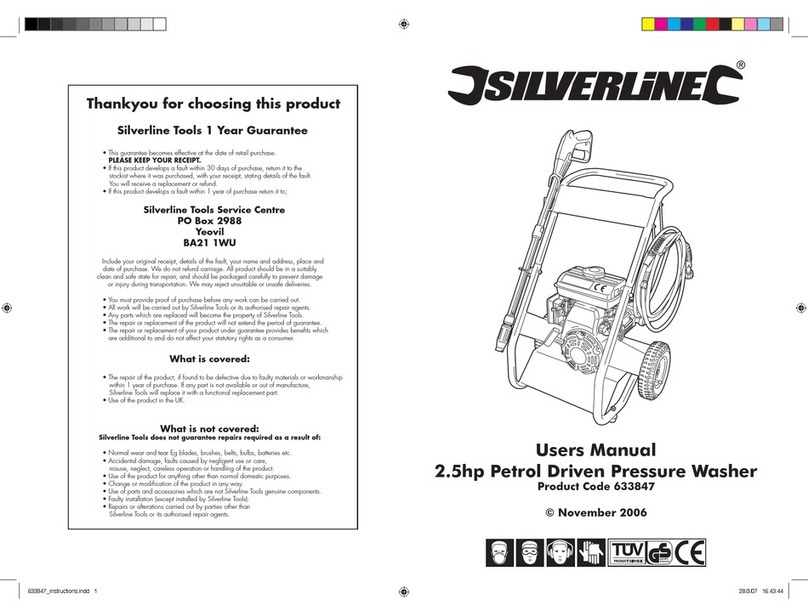
Silverline
Silverline 633847 User manual
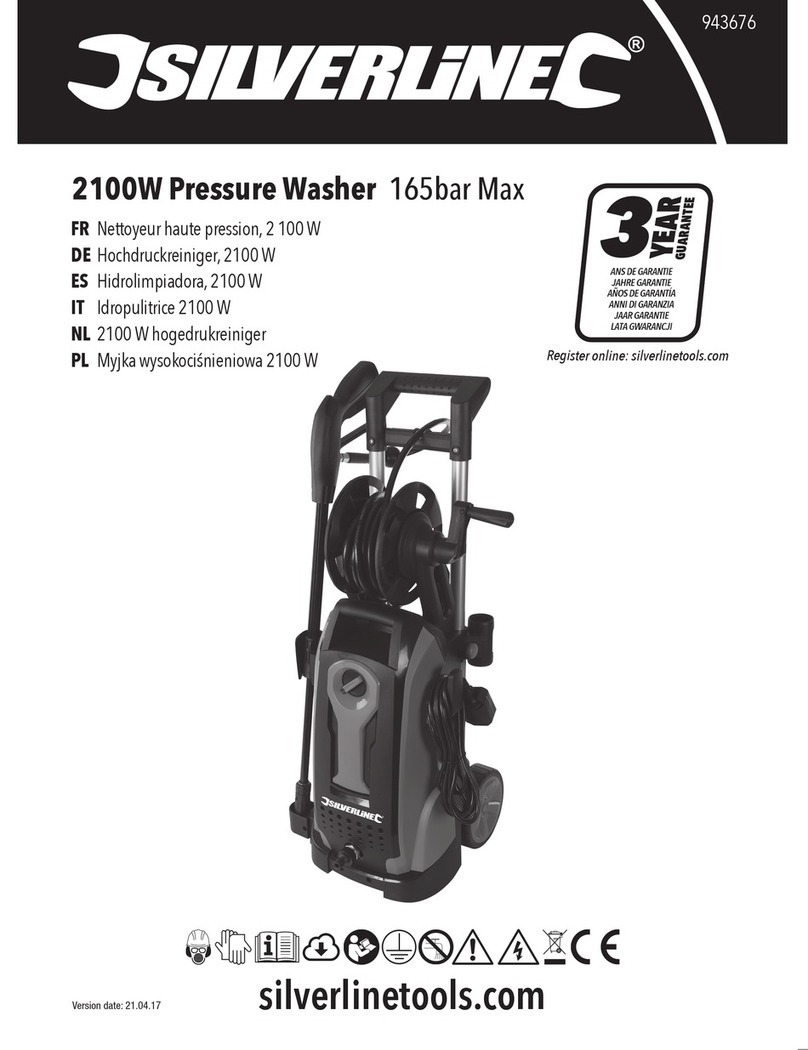
Silverline
Silverline 943676 User manual

Silverline
Silverline 389431 User manual
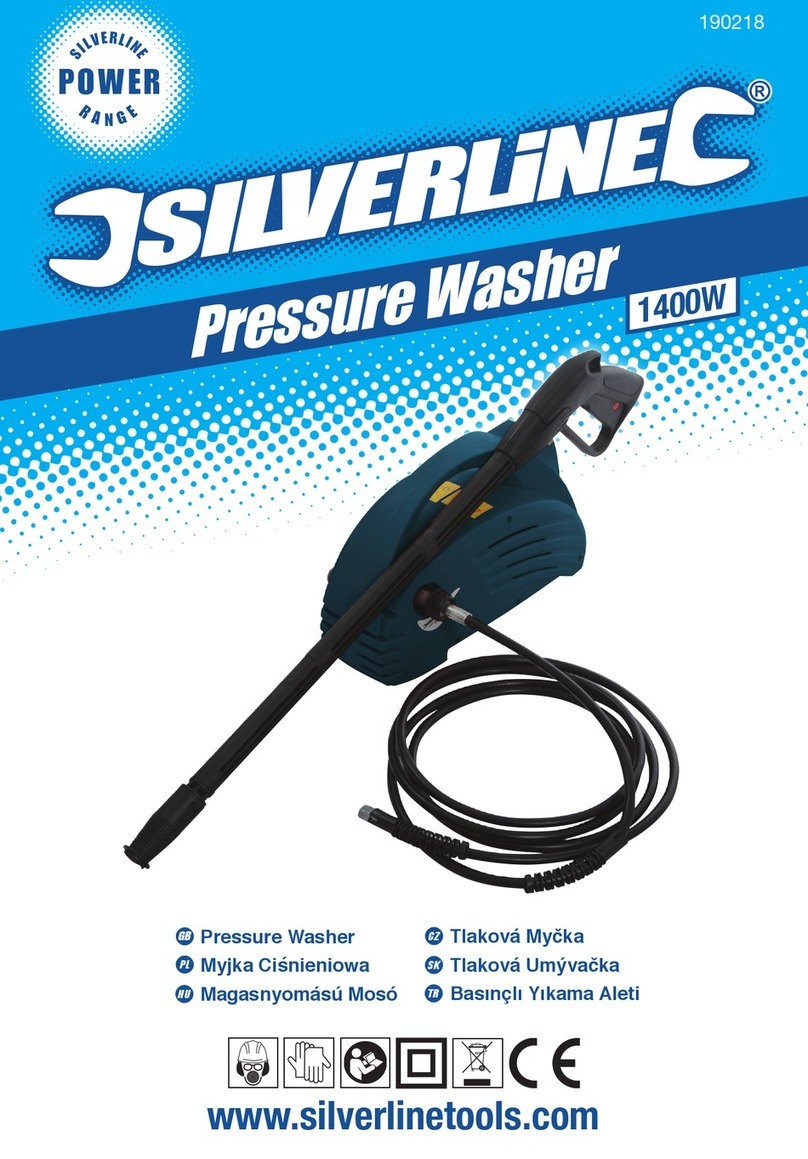
Silverline
Silverline 1400W Pressure Washer User manual
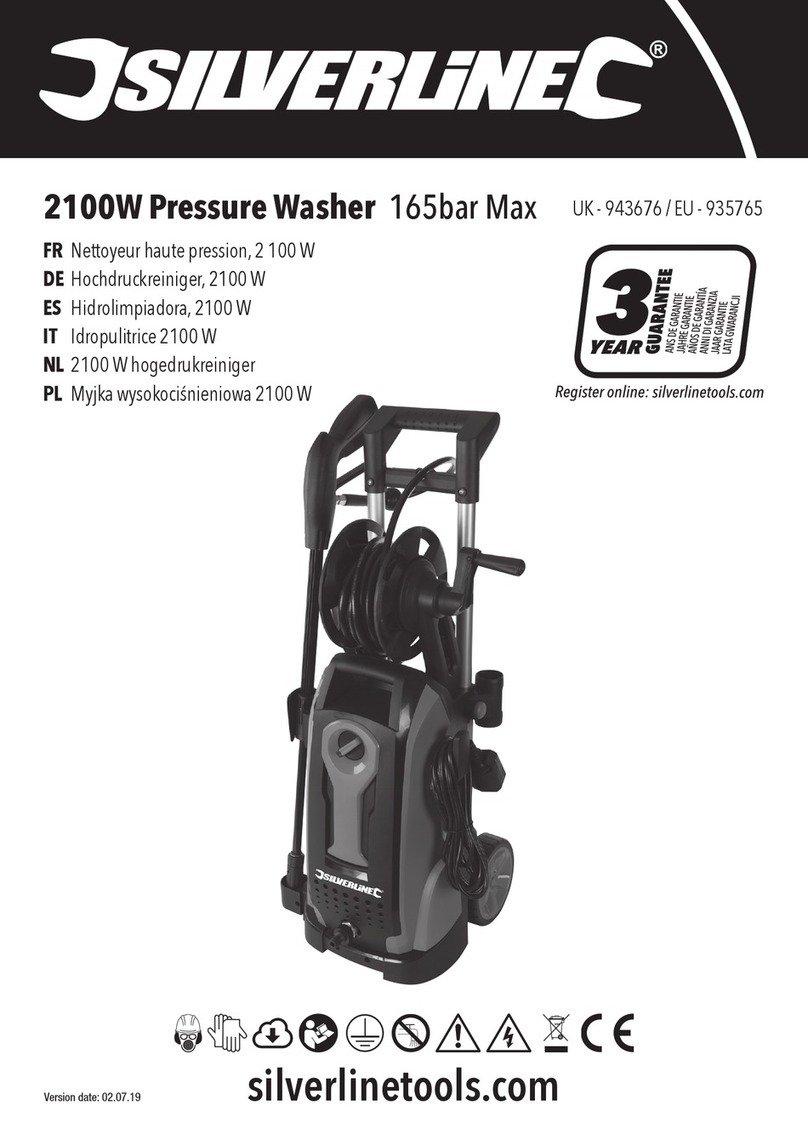
Silverline
Silverline 935765 User manual
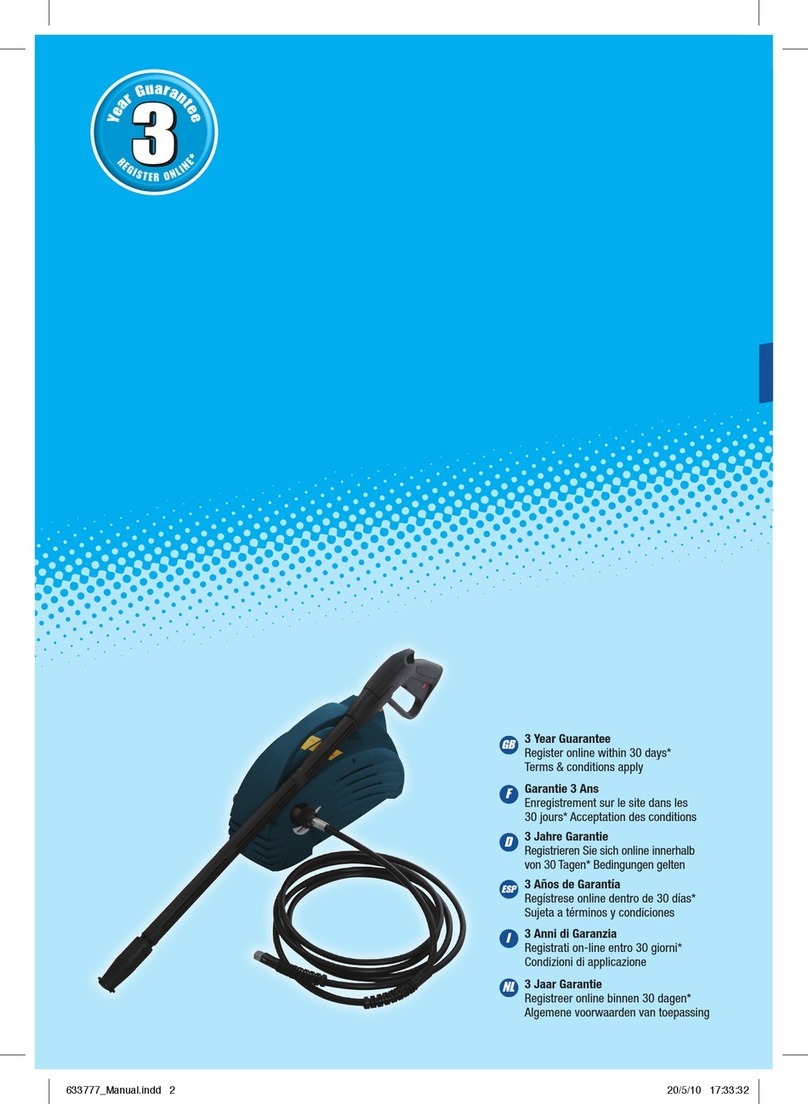
Silverline
Silverline POWER 633777 User manual
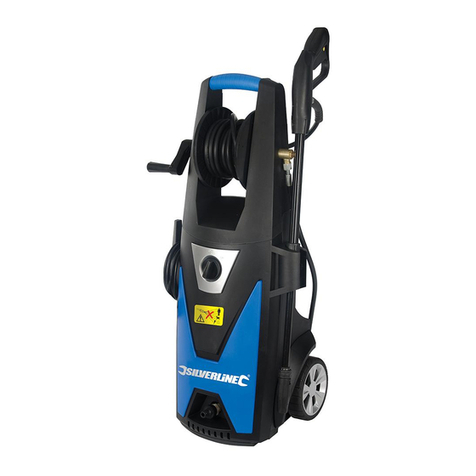
Silverline
Silverline 102377 User manual
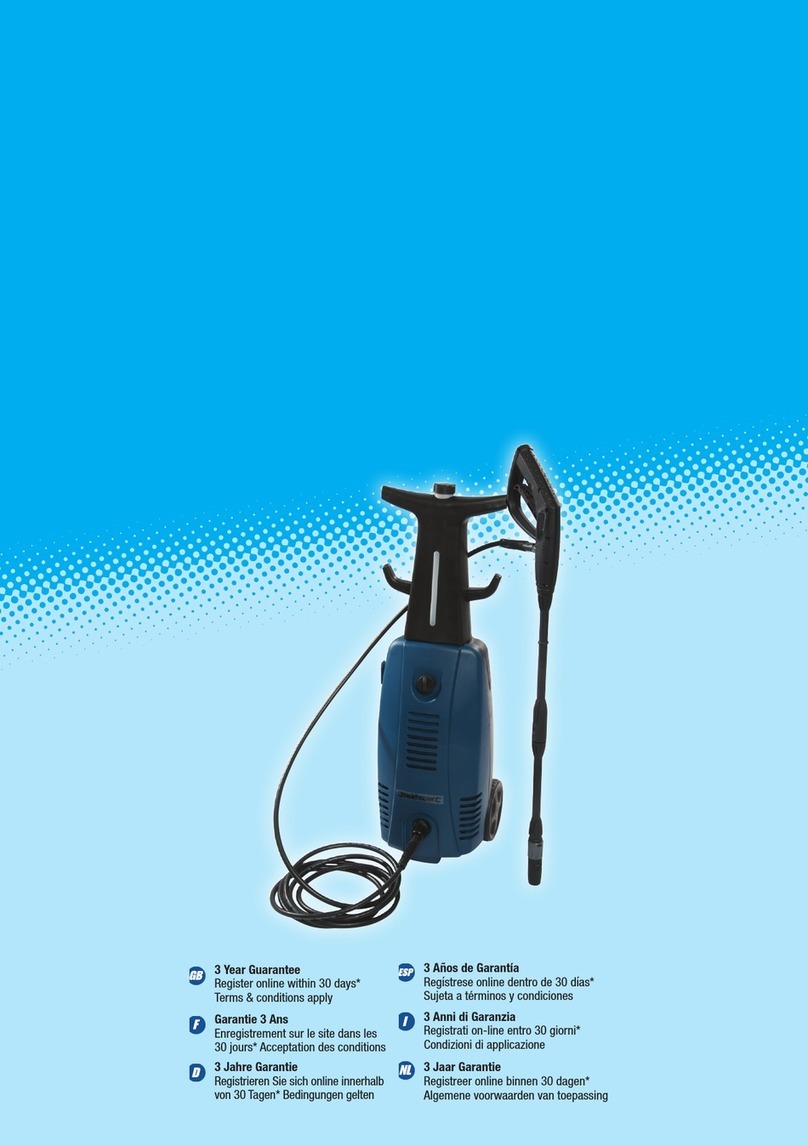
Silverline
Silverline 398920 User manual
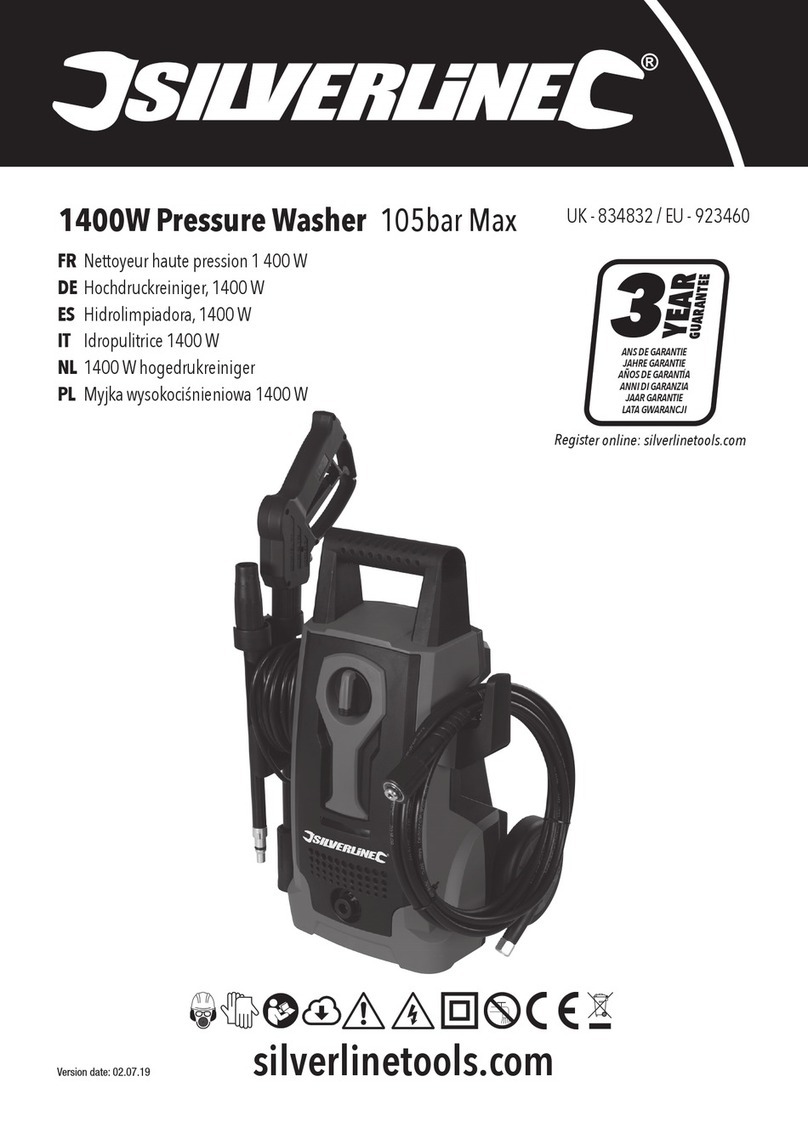
Silverline
Silverline 834832 User manual
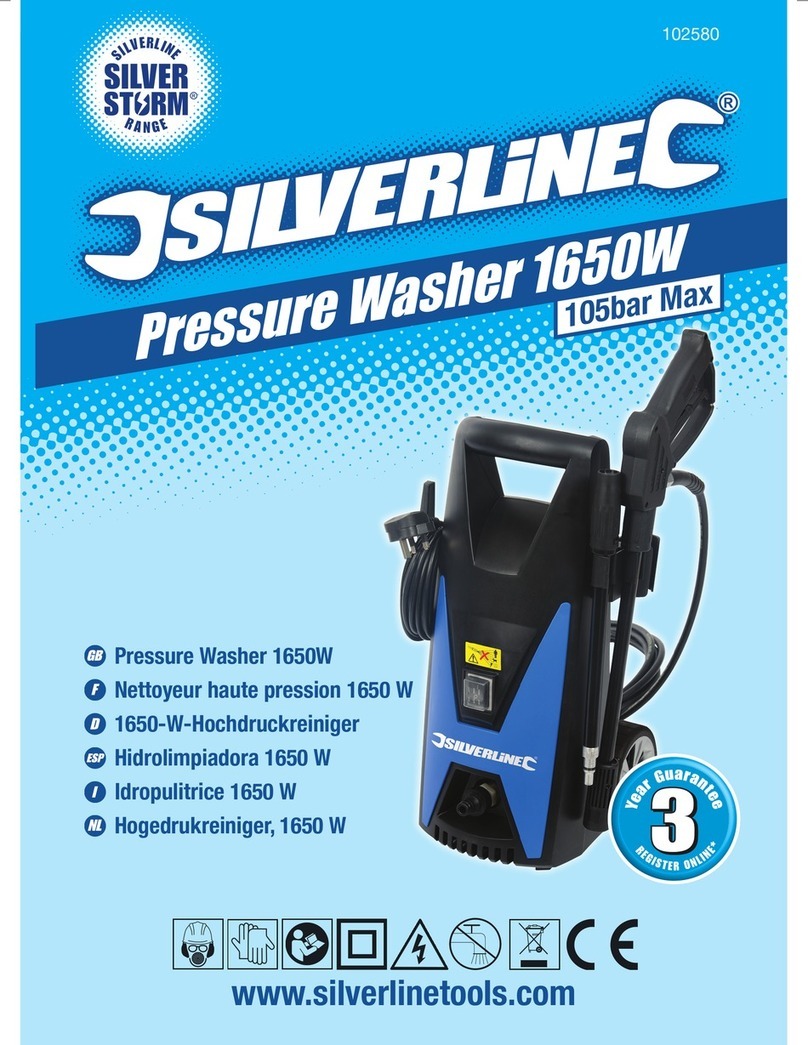
Silverline
Silverline 102580 User manual


